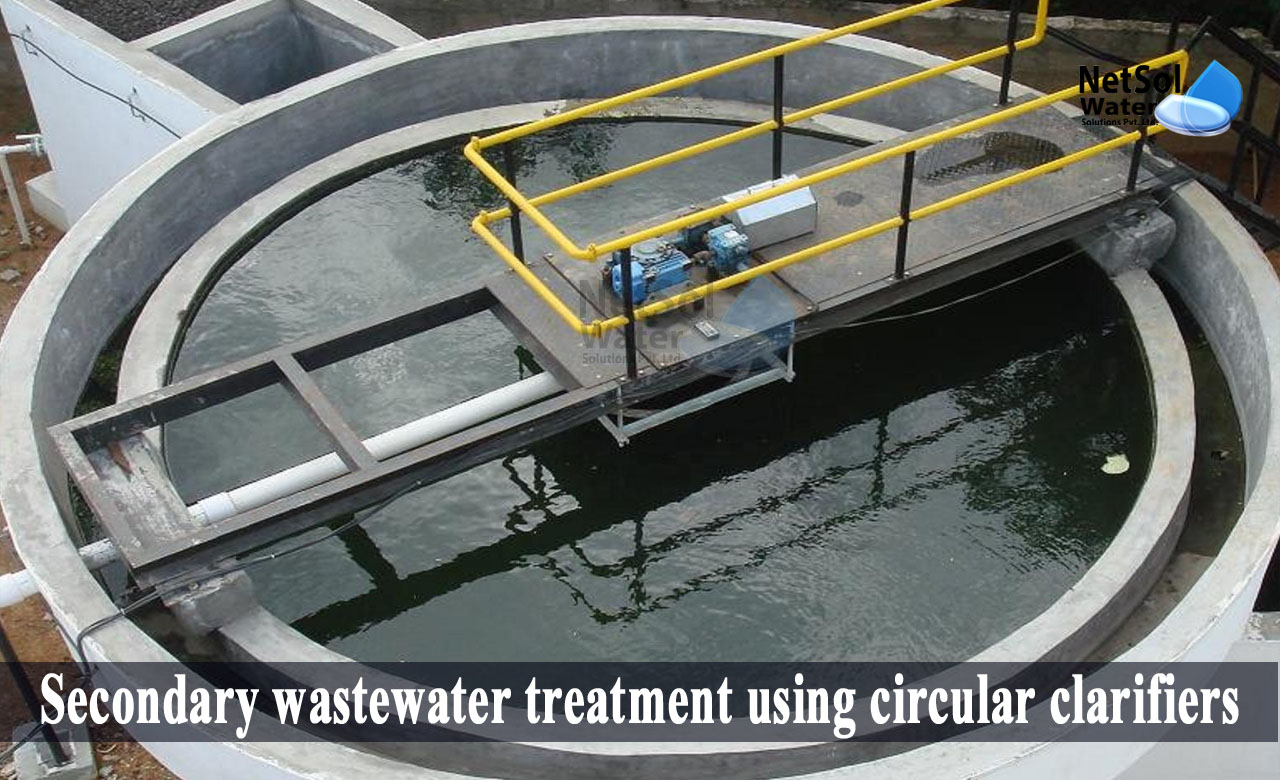How to Secondary wastewater treatment using circular clarifiers?
The secondary circular clarifiers for wastewater from Netsol Water are made to produce high-quality effluent, which may be released into the environment or treated further. With the help of our Secondary Clarifier, biological floc and colloidal solids are successfully separated, resulting in wastewater with incredibly low levels of organic material and suspended matter.
Influence of a secondary clarifier
Typically, the influent will be mixed liquor produced by an activated sludge process in an aeration tank. The biological waste that remains after primary clarification is metabolized by microorganisms.
It is possible to employ a central energy-dissipating inlet or a peripheral feed system that disperses influent, around the outside of the tank and facilitates secondary settling of activated sludge.
Design considerations of circular clarifiers for secondary treatment of wastewater
Netsol provides a range of designs depending on the needs and characteristics of the customer.
1: There are options for chemical and mechanical flocculation.
2: Mixed liquid suspended solids (MLSS), which are dispersed during transport from the aeration basin, can recombine by designing an expanded flocculation zone. The resulting larger floc will settle more efficiently.
The collection of sludge
1: To collect all settled particles from the tank and return them, either to the head of the activated sludge process (Return Activated Sludge), or to additional solid waste treatment, a radial tube header with orifices and a manifold using hydraulic suction is typically used.
2: The successful operation of the clarifier depends on the suction header's design, namely the geometry of the header and the location and size of the orifices. Each mechanism will be meticulously crafted by our engineers to guarantee steady velocities, and uniform pick up throughout the clarifier.
3: Alternately, we will create a riser pipe system that uses hydraulic suction to efficiently remove settled materials, depending on the application. To achieve even collection of the settled sludge during operation, considerable consideration must be paid to the riser pipe design, much as with suction headers.
4: For secondary clarity, spiral scrapers or regular scraping mechanisms can also be provided. Drives are carefully chosen to ensure longevity and reliability.
Scum removal and skimming
For the removal of floating matter, we can offer a typical skimming arm with a scum beach, and sludge box at the tank's edge, a full-radius scum trough, or a ducking skimmer.Depending on the scum loadings, anti-rotational scum baffles can also be provided.
Clarifier Waste
Scum baffles and V-notch weirs specially created by Netsol will guarantee high-quality effluent, by preventing floating material from entering the effluent wash and ensuring laminar flow throughout the clarifier.
Stainless steel, FRP, aluminium, and galvanised steel are just a few of the materials, which can be used to construct weirs, baffles, and launders.To maximise effluent quality, we will assess the performance of the current clarifiers, and choose the best design settings.
How can we assist?
Netsol Water provides expert guidance and technical support for all air, water and wastewater related issues. Our certified specialists have worked on a wide range of clarifiers for secondary treatment of wastewater, in a variety of water and wastewater treatment sectors.
We will assist you in ensuring that your industry complies with all authority laws. We are the experts, from design to installation, to support and maintenance. You can reach us via phone at +91 9650608473 or drop a mail at enquiry@netsolwater.com for additional information.
Keep up with Netsol Water blogs for water/wastewater treatment and air pollution management, and their respective treatment technologies.



